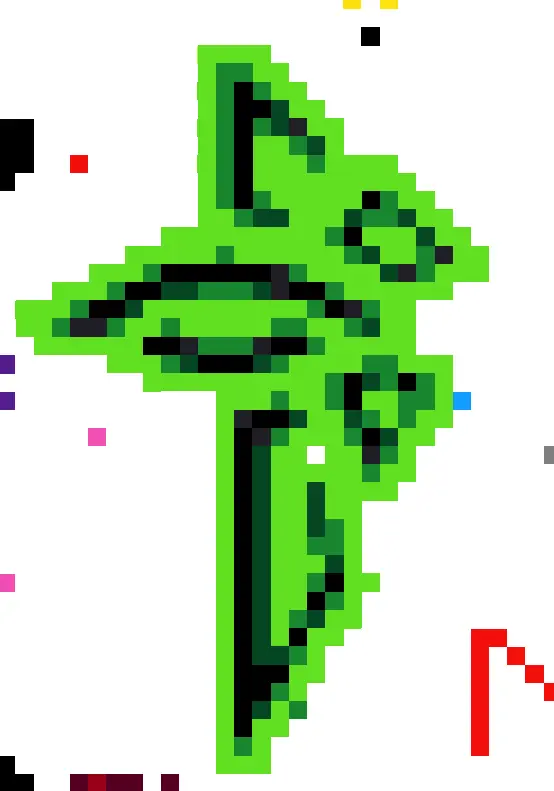So a bit under 3 years ago, I made my infamous Wayland rant post that is likely the most read post on this blog by miles. I should really actually write about music again one of these days, but that’s a topic for another time. The language was perhaps a bit inflammatory, but I felt the criticisms I made at the time were fair. It was primarily born out some frustrations I had with the entire ecosystem, and it was not like I was the only sole voice. There are other people out there you can find that encountered their own unique Wayland problems and wrote about it.
With that post, I probably cast myself as some anti-Wayland guy which is my own doing, but I promise you that is not the case. You can check my mpv commits, and it’s businesses as usual. Lots of Wayland fixes, features, and all that good stuff. Quite some time has passed since then, and it is really overdue look at the situation again with all the new developments in mind. To be frank, my original post is very outdated and it is not fair to leave it up in its current state without acknowledging the work that has been done. So in comparison to 3 years ago, I have a much more positive outlook now.
The only thing that’s keeping me from Wayland full-time is the push to talk mess. I use Mumble to talk with friends. Under Wayland, to make it work you have to force mumble to run in the xwayland mode and even then, push to talk will only work when you’re focused on xwayland windows. Want to look up something on web browser? Cool, now your push to talk button won’t register. You have to click on any currently running xwayland application. As I need that push to talk on a regular basis, it’s absolutely infuriating.
This is such a major issue for streaming. It’s why I had to stop using Gnome. Global hotkeys for OBS, Discord, etc are such a crucial part of it. It’s actually shocking to me how Linux has moved on without global hotkeys and nobody seems to care.
The Plasma solution is sweet, but I’m sticking to X11 until Wayland actually functions for streaming.
been a while since I used kde & wayland, but I remember there being something in the Plasma settings -
random redditor said “Go under “KDE Settings->Applications->Legacy X11 App Support” and click to allow keylogging for all keyboard keys”, I think this was it. Had discord (running in xwayland) accepting my global hotkeys with no problems
Oh, you’re right. They have that option and it works, thank you. Though now I wish they had a setting to allow only one specific key. I see it’s either function keys/function+whatever you press while holding function key/everything. But then again, I only use 2 applications running in xwayland so it’s fine.
Yeah as far as I understand, it’s available with the xdg-desktop-portal Global Shortcuts for any application to implement. It’s available for both sandboxed and regular applications to implement.
I’m not abandoning my Awesome WM setup anytime soon personally. But I thought it’s worth sharing this perspective from someone who knows this stuff much better than me.
Yeah, same boat.
Tried riverwm few months ago but couldn’t fit my Awm workflow into it, river seems to think about tags as just tags for where you want windows (even on multiple of them) but I just want workspaces, where each ws also has its own tiling mode. Also, seems there is no standard on how to read/show the current tiling mode by something like waybar, also essential for me when toggling through them.
Also I don’t understand Xwayland - I’ve searched hours for ways to tell the compositor to “tell” Xwayland to not scale the content dpi or something along these lines - there seems to be no standard and every compositor handles xwayland in their own way?
What X11-only apps/programs did you need xwayland for?
I actually always disabled xwayland whenever I experimented with wayland (weston and sway), because everything I use is supported natively, and I wanted to make sure the native support was forced.
I’ve actually forgot where exactly was the prolem, I remember some electron app in wayland mode was crashing/glitching - that might be because of my GPU though (3090 with open dkms latest drivers). Also maybe Pycharm didn’t look right?
I knew dudemanguy would eventually make a post like this. I use the distro(Artix Linux) he’s a maintainer on Artix, and he’s a solid dude that is always willing to help and gives solid help.
I have both riverwm and bspwm along with Wayland and X on my system and honestly have stuck on X because getting my workflow exactly the same on Wayland has been a technical hurdle of learning Zig (riverwm is written in Zig), and so far, with the exception of the occasional race condition, X just works.
I want to convert to Wayland, and will probably get around to making my own custom scripts in zig for working with riverwm. But until then, X/bspwm is where I live.
For example, the recently publicized about mouse latency differences is true and something I’ve noticed but the difference doesn’t particularly bother me. Something like that is just one of those inevitable consequences of the design of Wayland being so fundamentally different.
It would be interesting if someone explained the relationship between Wayland design and mouse latency
It is kinda simple. X.org and older Wayland compositors use the legacy KMS API, while modern compositors use the atomic API. The atomic API lets a compositor update everything for all planes in one go, this is a good thing because either all changes apply or none at all. The legacy API only lets things be updated individually.
Now why does atomic have more latency when it comes to mousing around? It’s because in a single atomic commit all properties have to be set, including cursor X & Y positions. Once an atomic commit has been sent to the kernel, it is locked and can’t be changed until the next monitor vblank. This means the cursor position is ever so slightly outdated. The legacy API does not have this limit, compositors can immediately move the cursor no problem, so less perceived latency. You can particularly see this while dragging windows around, on a modern Wayland compositor the cursor will be perfectly attached to the window, but in X.org it’ll be slightly ahead because of the reduced latency. Unless you don’t have a compositor running, of course.
There were proposed changes to address this years ago, but those seem to have fizzled out.
Oh and this is also why the cursor movement might visibly start stuttering during heavy GPU load. This is a problem that was solved back in the 80s but here we are…
To be honest, I switched to Wayland years ago precisely because of the better perceived input/cursor experience.
Change my mind, but having an average of half a frame input latency is much preferred when in return I gain that the cursor position on the screen actually aligns with all the other content displayed.
Plus, I’m very sensitive to tearing, so whenever it happens I get the impression that there was a huge rendering error.
Well and on the note that the cursor might visibly stutter, sure. But it’s a bit misleading. A game pinning the GPU to 100 % and running on 5 FPS doesn’t mean that your cursor will be rendered with 5 FPS. So far I’ve only noticed cursor lag/stutters in OOM situations, but neither under heavy GPU or CPU load.
Thanks for the detailed answers. So we can say that Wayland sacrifices lower latency in exchange for higher accuracy.
According to this post Gnome allows you to change this behavior through an environment variable (
MUTTER_DEBUG_ENABLE_ATOMIC_KMS=0on Ubuntu 22.04). It should be a configurable option, considering the amount of people complaining about this mouse behavior.Oh and this is also why the cursor movement might visibly start stuttering during heavy GPU load. This is a problem that was solved back in the 80s but here we are…
Sad, but does this problem only affect Wayland or also Xorg?
Note that depending on compositor switching to the legacy API might not help due to how they are designed. And with legacy you’ll also probably lose the fancy modern crap like HDR. A workaround I did in my own not-public fork of sway is to use the legacy API for cursor stuff and atomic for everything else. Seems to work well enough in getting the best of both worlds.
Sad, but does this problem only affect Wayland or also Xorg?
Wayland compositors only in my experience.
I finally got an “upgrade” going from a super slow 25 year old system to a kinda slow 10 year old system. Went with wayland to try it out and it works well enough so far.
The only thing I’m missing, and I haven’t had a need since the upgrade is to be able to run remote X applications locally. Relied on a netbook with X client and had my desktop downstairs. Now my new laptop can run all I meed so no remote X tunnels over SSH.
Is there a tiling Wayland compositor out there that supports applying custom shaders to windows (similar to picom)? This has been a known limitation for many years. And I brought it up myself with a couple of compositors’ developers, and they told me that it would break direct scan-out, and I told them that I would be fine with that, and then discussions fizzled out.
I also tried an x11vnc alternative I don’t remember the name of, and besides the generally buggy experience, it completely broke when power management kicked on the sever side (turning off the monitor IIRC). So that’s another show stopper, although maybe not as relevant as custom shader support which I need for applying my custom color inversion shaders to specific windows, otherwise, my vision would go bad quickly.
So yeah, I will be sticking with my Awesome WM (+picom +x11vnc) setup for a while too.
As someone who hasn’t yet moved to Wayland, how good is support these days for alternate keyboard mappings? Is this something that each individual window manager needs to support, or does Wayland itself manage them?
Not just “international keyboard” support, but truly arbitrary keyboard/symbol mapping support. I muddle in programming with APL, which needs its own key mapping with Unicode symbols.
I recall KDE had its own mapping support which used some system APL layout but I’d rather not have key mappings tied to a specific window manager.
deleted by creator







